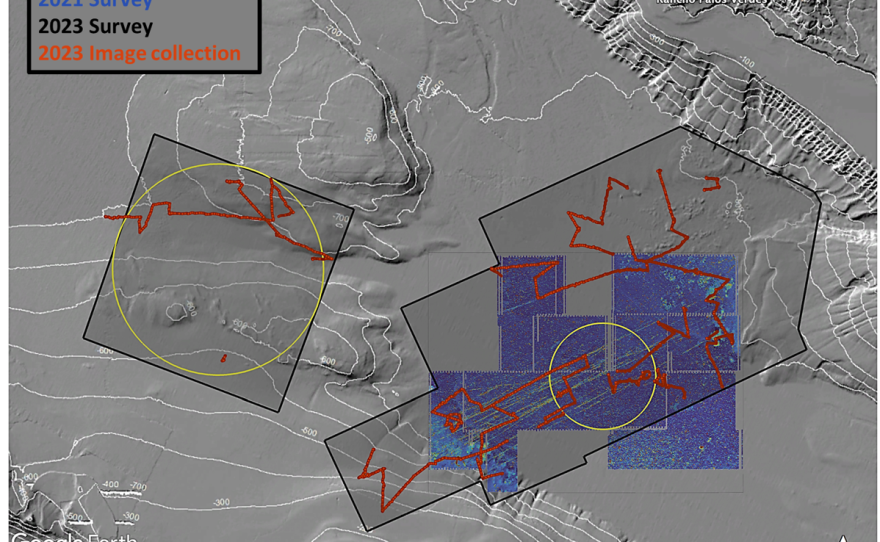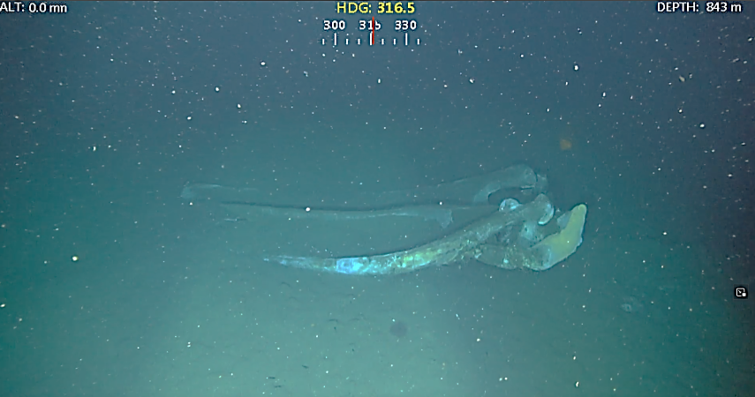San Diego researchers say aging military munitions litter the floor of the ocean where chemical companies dumped massive amounts of toxic insecticides west of Los Angeles.
New ocean floor surveys conducted in 2023 with remotely operated underwater vehicles (ROV) are revealing more about the San Pedro basin. The location was a legally approved off-shore dumping ground for decades.
Researchers at UC San Diego’s Scripps Institution of Oceanography (SIO) have committed to find out more about the site as part of the effort to gauge lingering impacts from the toxins dumped there.
Environmental Protection Agency records show massive amounts of Dichlorodiphenyltrichloroethane (DDT) was dumped there, but likely not in barrels.
Acoustic surveys taken in 2021 suggested more than 25,000 barrels littered the sea floor there. A small number of dives seemed to confirm that conclusion.
But many of the objects identified as DDT barrels are now thought to be something else.
“What you’re seeing in these new results is that we’re able to drive the ROV along linear features and classify munitions along those features,” said Sophia Merrifield, a marine physicist at SIO. “Those linear features that were detected are likely composed of munitions.”
High definition photographs confirm the findings.
In total, the new acoustic surveys covered more than 135 square miles in two separate locations but researchers concede there are limitations.
“Surveying, using a video camera, following along known targets even with three weeks of at-sea time with the camera system down, we’re still looking at the seabed through like the lens of a soda straw. So, we’re surveying very small areas,” said Eric Terrill, the director of the Marine Physical laboratory at SIO.
Records indicate the DDT dumped there was released in large quantities, but most was likely released from barges directly into the water. Even so, the contamination persists.
“There’s pretty clear evidence from preliminary findings to suggest that DDT is pervasive in these deep ocean sites we’re surveying,” said Brice Semmens, the director of the California Cooperative Oceanic Fisheries Investigation. “But the details of that are important. It looks as if the highest abundance of DDT is subsurface in the sediments.”

Navy officials were made aware of the munitions discovery.
“These munitions are likely a result of World War II-era disposal practices, said the Navy in a statement. “While disposal of munitions at sea at this location was approved at that time to ensure safe disposal when naval vessels returned to U.S. ports, the Navy follows DOD guidance for the appropriate disposal of munitions that aligns with state and federal rules and regulations.”
“The Navy is reviewing the findings and determining the best path forward to ensure that the risk to human health and the environment is managed appropriately and within applicable federal and state laws and regulations,” the statement said.
Another interesting find was the discovery of more than 60 whale carcasses on the floor of the basin.
The water where the bones were found has very little oxygen and sediment had not covered them. Researchers do not know if the whale deaths happened over a long period of time or if exposure to toxins accounts for the carcasses.
The discovery more than doubles the number of whale carcasses that have been found underwater.









